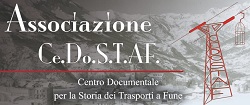Nuevo Teleferico de Merida
It is planned to upgrade the existing aerial ropeway Mérida – Pico Espejo that was originally built in 1958 in order to meet today’s safety standards and to increase capacity and reliability:
Merrits of the upgrade:
- Eliminate weak technical points
- Achieve today‘s state of the art in ropeway technology
- Make it a safe „Teleferico“
- Eliminate queues by increasing the capacity
- Make it a modern looking attractiv „Teleferico“
Concept of the upgrade:
- Reuse of civil construction as far as possible
- New cabins for 60 passengers
- Increase of travel speed
- Reduction of towers from 12 to 9
- Replace all ropes and el.mech. components
- Use of double-trackrope system for increased stability of the installation
- New, attractiv look of the top terminal with panoramic appearance
Operational requirements:
- Cabin size 60+1 passenger
- Specific cabin surface 0.25 m2/passenger
- Passenger weight 75 kg
- Travel speed max. 10 m/s
- Hourly capacity > 500 pph
- Operation all year operation
- Design life 50 years
- Expected no. of trips / year ~ 20’000
- Expected no. of trips 1’000’000
Technical requirements:
- System double-track jig-back system
- Track ropes fix anchored on both ends
- Drive locations: La Montana and Loma Redonda
- Haul rope tension counterweight at opposite terminals
Double reversible aerial ropeway, each section with two cars for 80 passengers each. The cars are travelling on two tracks formed by two fully enclosed track ropes which are fix-anchored in both terminals. In the terminals at the car stopping position, the cars are resting on a saddle to guarantee a flush level of the cabin floor with the platform for any load condition. The cabin opposite of the drive terminal is stopping on a buffer which controls the stop position and only after this cabin has reached it’s end position, the cabin at the drive terminal is pulled in to the correct stopping position. Torque and motion of the friction-type drive is transmitted from the drive to the car by means of a spliced haul rope which is connected to the carriage by rope clamps. The haul rope is tensioned at the terminals opposite the drive terminals and by means of a counter weight, built behind the station platforms. The haul rope is isolated to detect any deropement and to transmit signals to/from the cabins.
The system is designed without track rope brake acc. to EN 12929-2. This allows to make it a more resistant and reliable system in adverse wind conditions. In addition the lateral clearance at tower crossings has been increased to 20% to achieve an optimized performance in heavy wind conditions. The cabin’s size, structure and windows allow for optimum viewing of the scenery. On both sides of the cabins is a wide automatically operated double wing sliding door. Access to the cabin with wheel chairs and cargo trolleys is flush with the platforms. In addition, the cabins are equipped with all further necessary equipment such as microphone, loudspeaker, air inlets, lights, hold-on rails etc.
Technical data
Section 1:
Lenght: 3416 m
H: 864 m
Trip time: 440 s/7.3 min
Stopping time: 90 s/1.5 min
No. of trips/h: 6.8
Section 2:
Lenght: 3261 m
H: 1010 m
Trip time: 435 s/7.3 min
Stopping time: 90 s/1.5 min
No. of trips/h: 6.8
Section 3:
Lenght: 2752 m
H: 593 m
Trip time: 362 s/6 min
Stopping time: 90 s/1.5 min
No. of trips/h: 8
Section 4:
Lenght: 2991 m
H: 722 m
Trip time: 440 s/7.3 min
Stopping time: 90 s/1.5 min
No. of trips/h: 6.8
Logistics
One of the main challenges for the upgrade of the “Pico Espejo” aerial ropeway are the logistics, accessibility and to cope with high altitude, wind and weather.
Phase 1:
Reconditioning of the existing passenger ropeways; reposition trackrope no. 1 that shows difficulties on the roller chain; eliminate weak points so that it can serve as a temporary construction ropeway.
Phase 2:
Reconditioning of the existing four service ropeways; e.g. replacing of trackropes where appropriate; overhauling of drives and drive brakes; corrosion protection on towers; general check-up. For this works, it is necessary to have the passenger ropeways available for access reasons.
Phase 3:
Transport of cement, sand and gravel to all terminals; site installation of all equipment as cranes and relevant equipment; construction of all possible elements while the main ropeways are in operation. Transportation of electromechanical equipment as far as possible prior to shut-down of the passenger ropeways.
Phase 4:
Concreting of the new tower foundations with the existing passenger ropeways.
Transport of the new towers on site with the existing passenger ropeways.
Phase 5:
Stop of operation of the passenger ropeways and use of the existing ropes to transport the new ropes up the hill (rope pulling suspended from existing ropes on section 1 and 2 to avoid cutting of trees/forest. Prior to dismantling of the passenger ropeways all new ropes need to be in their final location of use.
Phase 6:
Dismantling of the existing passenger ropeways and reinstallation of new equipment; reuse of the existing ropes for final rope pulling Access by means of service ropeways.
Phase 7:
Start-up and commissioning.



Fondato nel 2003 e con una media di 7500 pagine visitate al giorno, Funivie.org è la fonte di informazione e aggiornamento per tutti coloro che progettano, lavorano o semplicemente amano la tecnologia funiviaria. Funivie.org non è responsabile dei contenuti pubblicati da autori esterni. Come diventare autore aziendale o privato. |






 Forum
Forum